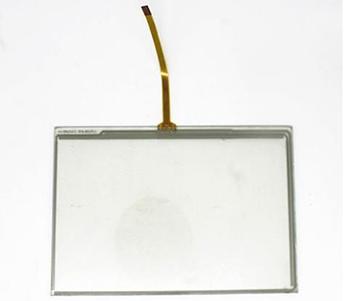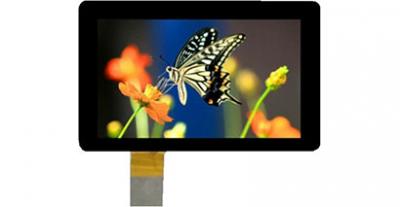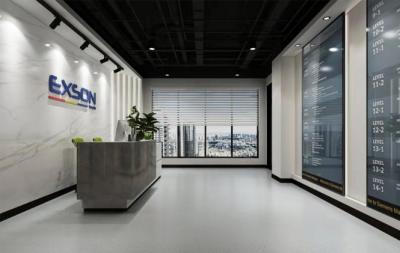The advancements in medical technology have significantly transformed healthcare systems, with medical LCD displays playing a crucial role in enhancing patient care. These display panels are specially designed to meet the demanding requirements of medical professionals, ensuring accurate and reliable imaging output for diagnostic purposes. This article delves into the technology behind medical LCD displays, highlighting their importance and benefits in the healthcare industry.
Medical LCD displays are advanced visualization systems specifically designed for medical imaging applications. These displays offer high-resolution images with excellent contrast ratios, enabling doctors and radiologists to make accurate diagnoses. Unlike consumer-grade displays, medical LCD displays adhere to stringent quality control standards, ensuring precision and consistency in the depiction of medical images.
Medical LCD displays possess several key features and specifications that make them reliable tools in medical settings. These include:
High-resolution Imaging: Medical LCD displays often have a higher pixel density, providing exceptional clarity and detail in medical images. This level of precision is vital, especially in areas such as radiology, where even the smallest anomalies need to be detected and accurately interpreted.
Wide Color Gamut: The ability to display a broad range of colors allows medical LCD displays to present medical images with exceptional accuracy. This feature is particularly important in pathology and dermatology, where accurate color representation is crucial for diagnosis.
DICOM Calibration: Medical LCD displays are calibrated according to DICOM (Digital Imaging and Communications in Medicine) standards, ensuring consistent display characteristics necessary for accurate image interpretation. This calibration ensures that the grayscale levels in the image match the defined standards, facilitating precise diagnosis.
Medical LCD displays employ advanced backlight technologies such as LED (Light Emitting Diode) or OLED (Organic Light Emitting Diode) to achieve superior image quality. LED backlighting allows for better brightness control, resulting in improved contrast and reduced power consumption. OLED technology, on the other hand, offers self-emitting pixels, producing deep blacks and true-to-life colors, ideal for viewing complex images.
Medical LCD displays incorporate various connectivity options to facilitate seamless integration with medical imaging systems. These displays often feature multiple input ports, such as HDMI, DisplayPort, and VGA, enabling compatibility with a wide range of devices. Moreover, ergonomic design elements like adjustable stands and anti-glare coatings ensure optimal viewing comfort for healthcare professionals, reducing eye strain during extended use.
Medical LCD displays undergo rigorous testing to comply with stringent medical standards and safety regulations. These displays are certified to meet medical-specific criteria, such as IEC 60601, ensuring electrical safety and electromagnetic compatibility. This certification ensures that these displays can be safely used in close proximity to medical equipment without interference or risk to patients or healthcare professionals.
The technology behind medical LCD displays is rapidly evolving, catering to the unique needs of the medical industry. As medical professionals rely heavily on visual outputs for diagnosis and treatment, the accuracy and efficiency of these displays become paramount. With their high-resolution imaging, wide color gamut, and adherence to calibration standards, medical LCD displays enhance the precision and reliability of medical image viewing. These advanced visualization systems not only improve patient care but also contribute significantly to the overall efficiency and effectiveness of healthcare professionals in providing accurate diagnoses and treatment plans.
 Enhancing Your Drive: The Power of Car LCD ModulesOctober 23, 2023In today's technology-driven world, our cars are becoming more than just a means of transportation. They are evolving into sophisticated hubs of connectivity, entertainment, and information. One o...view
Enhancing Your Drive: The Power of Car LCD ModulesOctober 23, 2023In today's technology-driven world, our cars are becoming more than just a means of transportation. They are evolving into sophisticated hubs of connectivity, entertainment, and information. One o...view A Complete Guide to the Classification of LCD Liquid Crystal Displays!August 4, 2023Liquid crystal display, abbreviated as LCD, is a matrix display screen driven by thin film transistors. It uses current to stimulate liquid crystal molecules to generate points, lines, and planes, com...view
A Complete Guide to the Classification of LCD Liquid Crystal Displays!August 4, 2023Liquid crystal display, abbreviated as LCD, is a matrix display screen driven by thin film transistors. It uses current to stimulate liquid crystal molecules to generate points, lines, and planes, com...view What Are the Advantages of Resistive Touch Screen?February 8, 2023Resistive touch screens were first invented in 1971 by Dr. Samuel G. Hurst. He calls the sensor the Elograph, after his company, Elographics.Ⅰ. What is a resistive touch screen?As the name suggests, ...view
What Are the Advantages of Resistive Touch Screen?February 8, 2023Resistive touch screens were first invented in 1971 by Dr. Samuel G. Hurst. He calls the sensor the Elograph, after his company, Elographics.Ⅰ. What is a resistive touch screen?As the name suggests, ...view Exploring the Dynamic Touch Panel Module Market Trends and ForecastsJanuary 25, 2024In a technologically driven world, touch panel modules have become an integral component across a range of industries. From smartphones and tablets to automotive and industrial applications, these mod...view
Exploring the Dynamic Touch Panel Module Market Trends and ForecastsJanuary 25, 2024In a technologically driven world, touch panel modules have become an integral component across a range of industries. From smartphones and tablets to automotive and industrial applications, these mod...view How the TFT display worksDecember 9, 20221. How does TFT display work?How does TFT display work? TFT is the abbreviation of Thin Film Transistor, which generally refers to thin film liquid crystal display, but actually refers to ...view
How the TFT display worksDecember 9, 20221. How does TFT display work?How does TFT display work? TFT is the abbreviation of Thin Film Transistor, which generally refers to thin film liquid crystal display, but actually refers to ...view Reliability Testing of the LCD SPIMay 26, 2023The LCD liquid crystal display screen needs to undergo various types of tests before it leaves our factory, to ensure that our display screens are reliable, stable, and of good quality. As LCD liquid ...view
Reliability Testing of the LCD SPIMay 26, 2023The LCD liquid crystal display screen needs to undergo various types of tests before it leaves our factory, to ensure that our display screens are reliable, stable, and of good quality. As LCD liquid ...view Call us on:
Call us on:  Email Us:
Email Us:  2F-M1 XiaWei Industrial Park, GuanLan, LongHua District, SZ, China
2F-M1 XiaWei Industrial Park, GuanLan, LongHua District, SZ, China